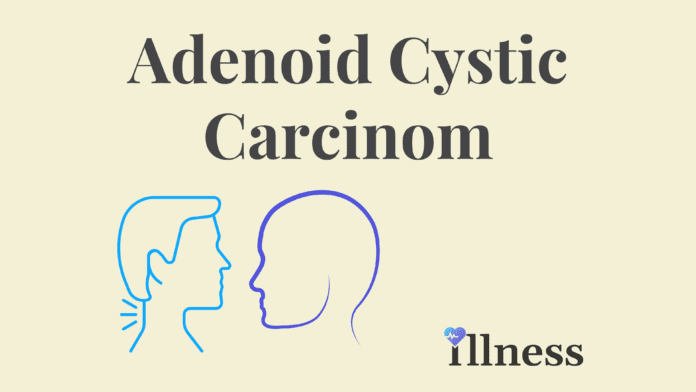Overview Of Adenoid Cystic Carcinoma
Adenoid cystic carcinoma (ACC) is a rare variety of adenocarcinoma, which is a type of cancer that begins in varying glandular tissues. The most common locations for these cancers are in the minor and major salivary glands within the neck and head. Additional locations include the uterus, breast, lacrimal glands, and windpipe.
Symptoms of ACC depend on the location of the tumor. For example, salivary gland tumors can cause painless masses in the face or mouth. Lacrimal tumors can cause changes in vision or a bulging eye. Tumors associated with the voice box or wind pipe can cause changes to speech or respiratory difficulties.
ACC has a tendency to spread along the nerves. Consequently, tumors can cause severe pain or nerve paralysis for the patient. ACC can also spread through the bloodstream, and in 5-10% of cases it can spread to the lymph nodes.
What exactly causes ACC is still unknown, but researchers are relatively certain it isn’t genetic (it does not fun in families).
ACC treatment can depend on a lot of different factors, and can include radiation, chemotherapy, and/or surgery. Sadly, ACC is more often than not a particularly aggressive form of cancer, and tends to have a poor long-term survival outlook.
Commonly Associated With:
Adenocystic carcinoma, cylindroma, and cribriform carcinoma
Causes Of Adenoid Cystic Carcinoma
What causes the development of adenoid cystic carcinoma (ACC) is currently unknown, but researchers do know with reasonable certainty that ACC manifests due to genetic changes of some sort that occur during a person’s lifetime – not inherited traits. Whatever these genetic changes are, they do not appear in egg or sperm cells, only cancer cells. This explains why ACC is not passed down through families, because whatever causes it could not be passed down that way.
Unlike other forms of head and neck cancer, ACC has not been linked to alcohol or tobacco use, or infection by human papilloma virus (HPV).
Symptoms Of Adenoid Cystic Carcinoma
Symptoms of ACC depend largely on where exactly the tumor is located in the person’s body. Examples include:
- Small tumors on the salivary glands can present as painless masses of the face or mouth, and usually grow slowly
- Lacrimal gland tumors may result in vision changes or eye bulging (proptosis)
- Tumors within the windpipe area (tracheobronchial tree) can cause respiratory problems
- Tumors in the larynx (voice box) can lead to changes in speech
- In some cases, more advanced tumors can cause pain and/or nerve paralysis, given that this neoplasm (another word for cancer) has a propensity for invading nerves
Treatment Of Adenoid Cystic Carcinoma
Standard Therapy: Surgical treatments of ACC, including resection (removal of the tumor if possible) are the go-to option for most situations. A lot of treatment centers also offer post-operative radiotherapy (also known as radiation therapy) to try and limit re-growth of the tumor if some small amounts of it are left behind after surgery. Some very specialized centers offer neutron beam therapy as an alternative to traditional radiation therapy. This type of treatment may be more effective in some cases.
Treatment options are very limited for metastatic or unresectable (irremovable) ACC. As a result, most patients receive palliative (pain treatment) care only.
Investigational Therapy: Several clinical trials currently operating are studying the effects of relatively new chemotherapeutic drugs (gemcitabine, paclitaxel, etc.) alone, or combined with other medications, for the possible treatment of metastatic or locally recurrent (repeatedly returning) ACC.
Other
Diagnostic tests for adenoid cystic carcinoma (ACC)
Health care providers will order a biopsy to confirm a diagnosis of ACC. A pathologist will then examine the cells taken from the biopsy under a microscope.
Imaging tests, such as CT scans and MRIs, can usually identify recurrences (re-growths) of tumors after treatment has concluded.



